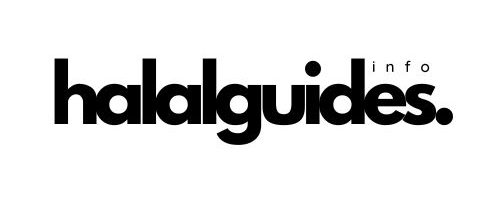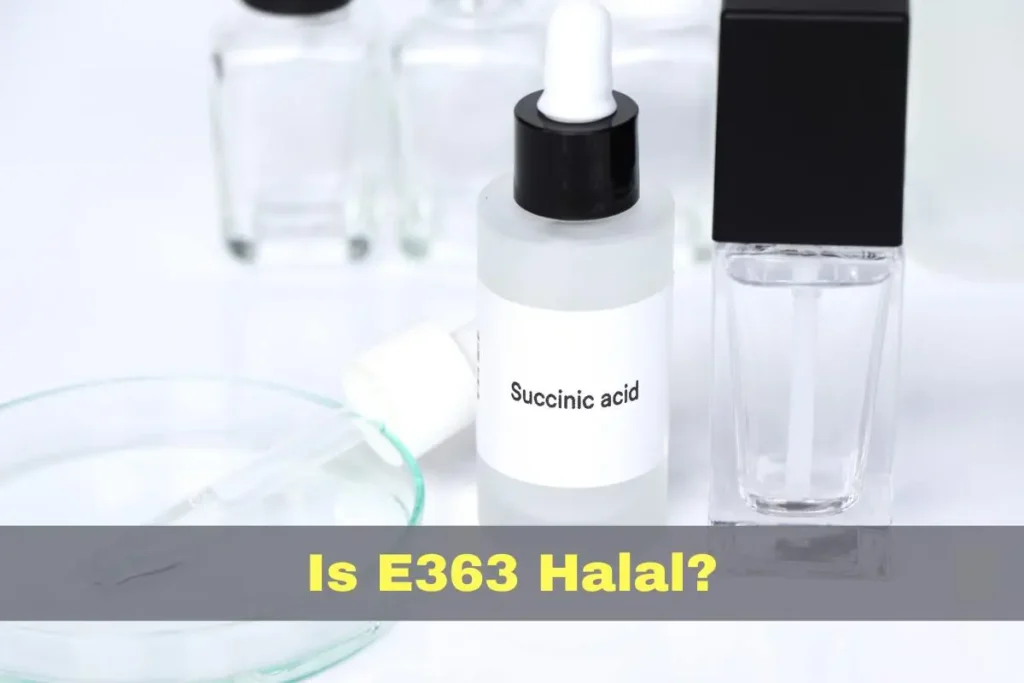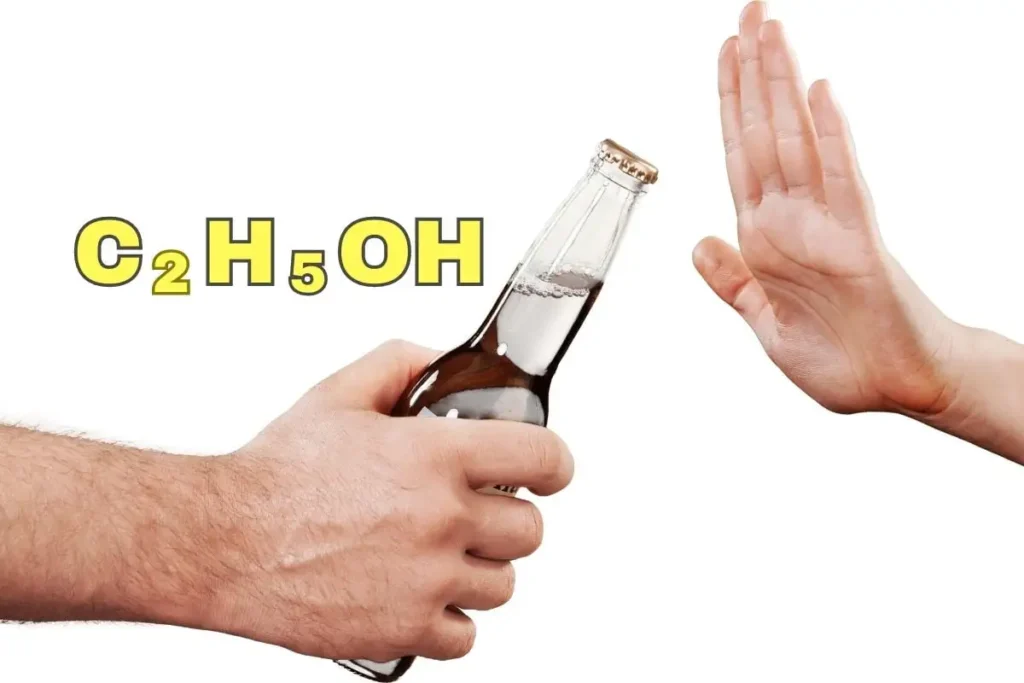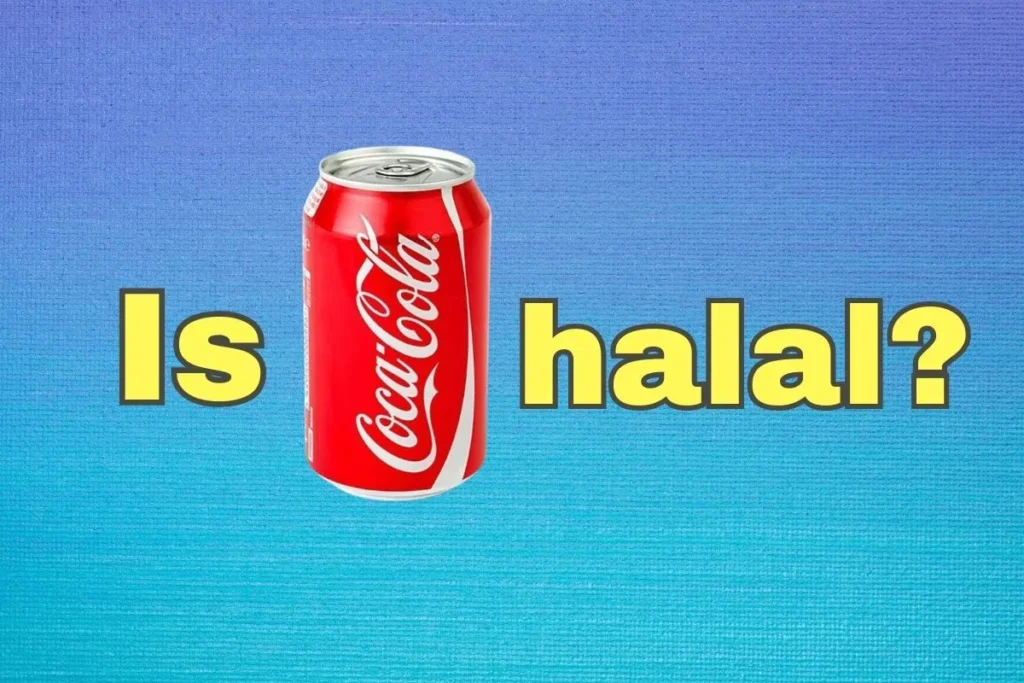Welcome to our comprehensive exploration of E363, also known as Succinic Acid, a common food additive. This article will delve into its chemical nature, uses, and possible side effects, and crucially, address the question: Is E363 Halal?
Die zentralen Thesen
| 📌 E363, also known as Succinic Acid, is a food additive used as a flavor enhancer and pH control agent. |
| 📌 The Halal status of E363 depends on its source and production method. If it is derived from a source other than fumaric acid, it is considered Halal. |
| 📌 E363 is generally safe for consumption in moderate amounts, but excessive intake may cause gastrointestinal discomfort. |
What is E363?
E363, or Succinic Acid, is a chemical agent known for its role as a flavor enhancer and pH control agent in various food products. Its commercial production involves the hydrogenation of maleic or fumaric acid, or alternatively, through aqueous alkali or acid hydrolysis of succinonitrile.
Chemische Struktur
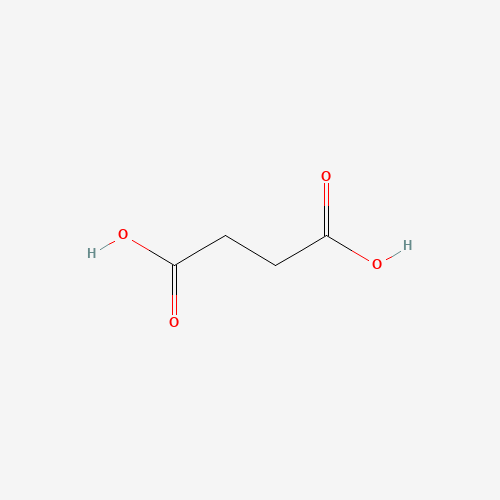
Succinic Acid, chemically termed as 1,4-butanedioic acid, has the molecular formula C4H6O4. It’s a dicarboxylic acid that plays a significant role in the Krebs cycle, a key part of cellular metabolism.
What Is E363 Made From?
You might be wondering what exactly goes into the making of E363, a common ingredient you’ve probably consumed without even realizing it. E363, known as Succinic Acid in the scientific community, is derived from two primary methods: the hydrogenation of maleic or fumaric acid and the hydrolysis of succinonitrile.
Let’s break these down for a clearer understanding.
Hydrogenation of Maleic or Fumaric Acid:
- Maleic Acid: It’s an organic compound, typically in a crystalline form.
- Fumaric Acid: Another organic compound, known for its role in the Krebs cycle, essential in cellular metabolism.
- The Process: These acids undergo hydrogenation – a chemical reaction that adds hydrogen. This transformation results in the production of Succinic Acid.
Hydrolysis of Succinonitrile:
- Succinonitrile: It’s a clear liquid used in various industrial applications.
- The Process: By exposing succinonitrile to alkali or acid in an aqueous environment, it breaks down to form Succinic Acid.
Isn’t it fascinating how these distinct processes, each unique in their chemical reactions, contribute to the production of the same substance? This versatility in production methods not only ensures a consistent and reliable supply but also allows for flexibility in sourcing the raw materials.
Consequently, E363 finds widespread use in the food industry, marking its presence in an array of products we consume daily.
Mögliche Nebenwirkungen
While E363 is generally recognized as safe for consumption in moderate amounts, excessive intake may lead to gastrointestinal discomfort in some individuals. People with specific health conditions or sensitivities should consult healthcare professionals before consuming products containing this additive.
Vorschriften und Richtlinien
Succinic Acid meets the specifications of the “Food Chemicals Codex,” ensuring its quality and safety in food applications. It’s used in food at levels that comply with good manufacturing practices, with specific maximum levels defined for different food categories like condiments, relishes, and meat products.
Dosierung und Anwendung
E363 is deemed safe when consumed in moderate amounts and is classified as GRAS (Generally Recognized as Safe) by the FDA. Its use should align with good manufacturing practices to avoid adverse effects.
Is E363 Halal or Haram?
The Halal status of E363 can be complex, depending on its source and method of production. If it is derived from a source other than fumaric acid, then its legal status is considered halal (permissible). This is because the legal status of fumaric acid itself is categorized as Syubhat (zweifelhaft).
Finde mehr heraus:
Ist E357 Halal oder Haram?
Ist E365 Halal oder Haram?
Abschluss
In our exploration of E363, Succinic Acid, we’ve uncovered its diverse role in enhancing flavors and controlling pH. Whether derived from the hydrogenation of acids or hydrolysis, its versatility shines.
Considering E363’s Halal status, the complexity arises, particularly if sourced beyond fumaric acid, aligning with Halal principles.
Within the intricate tapestry of food regulation, E363 finds its place, meeting specifications and being deemed safe within good manufacturing practices. Whether enhancing condiments or contributing to meat products, E363 reflects the nuanced interplay of science and gastronomy.
In conclusion, curiosity lingers, for in the world of E363, the journey is as rich as the additive itself.
Allahu A'lam (Allah weiß es am besten)
FAQ
What is the source of E363?
E363 is produced either by hydrogenation of maleic or fumaric acid or by hydrolysis of succinonitrile.
Is E363 safe for consumption?
Yes, E363 is considered safe for consumption in moderate amounts and is recognized as GRAS by the FDA. Excessive consumption may cause gastrointestinal discomfort.
What are some common food products that contain E363?
E363 is used in various food products as a flavor enhancer and pH control agent, including in condiments, relishes, and meat products.
What is the CAS number of E363?
The CAS number of E363 (Succinic Acid) is 110-15-6.
Is E363 banned in any country?
As of the time of this writing, E363 is not banned and is recognized as safe when used according to good manufacturing practices. However, regulations may vary by country, and it’s advisable to check local guidelines for the most current information.
